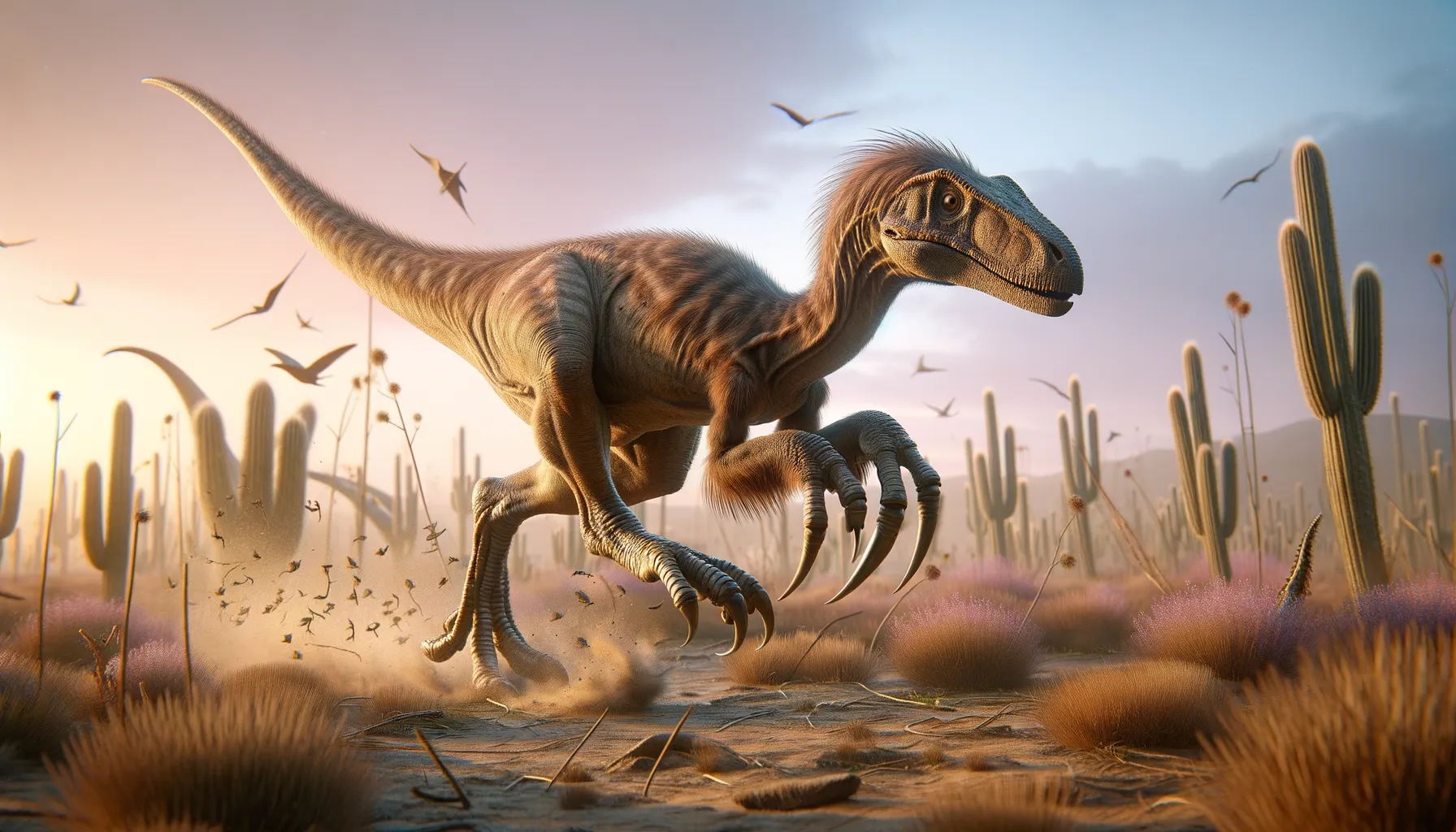
Mononykus
Small body, big surprises await discovery!
Period
Cretaceous
Length
Roughly 1 meter in length.
Height
About 0.5 meters tall.
Weight
Approximately 3 to 5 kilograms.
Mononykus was a small, bird-like dinosaur that lived during the Late Cretaceous Period. Known for its distinctive single claw on each hand, it was adapted for life in a terrestrial environment. With a slender build and strong legs, Mononykus was likely a swift runner, using its claw perhaps to dig for insects or other small prey. Its discovery has shed light on the diversity and specialization of theropod dinosaurs in this period.
Diet
Mononykus primarily fed on insects and small animals. It likely used its specialized claw to probe or break into nests for food. Its diet contributed to a more diverse ecosystem by controlling insect populations.
Hunting
Mononykus was not much of a hunter but more of a forager. It might have used its sharp claws and keen senses to locate and extract insects from burrows or under rocks. It relied on speed to escape larger predators.
Environmental challenges
Mononykus lived in an era marked by fluctuating climates and increased volcanic activity. These environmental changes impacted food availability and habitat stability. Its small size might have helped it survive in varied conditions, as it required fewer resources. Competition with other species for food was another persistent challenge.
Speed
Mononykus was relatively fast, capable of quick sprints.
Lifespan
Estimated to live around 10 to 20 years.
First discovery
Discovered in Mongolia in 1993.
Fun Facts
- Mononykus was a small dinosaur about the size of a turkey, known for its unique single-clawed hands.
- This dinosaur lived approximately 70 million years ago during the Late Cretaceous period.
- Mononykus had long legs and was likely a fast runner, possibly using its speed to catch insects or small prey.
- Its name means 'one claw,' referring to the distinctive single claw on each of its short arms.
- Mononykus was initially thought to be a bird due to its bird-like body and features, showing how closely some dinosaurs are related to modern birds.
- Fossils of Mononykus have been found in parts of Mongolia, offering clues about its environment and lifestyle.
- Despite its tiny size, Mononykus has helped scientists understand more about the evolution of flight in birds and theropod dinosaurs.
Growth and Development
Mononykus hatched from eggs, growing rapidly during its early life stage to reach maturity quickly. Its growth included the development of strong legs and a prominent single claw, which were crucial for its survival. The species' development emphasized physical features enhancing its ability to forage efficiently.
Habitat
Mononykus inhabited semi-arid environments with sparse vegetation. The presence of a rich insect life supported its dietary needs. Its habitat likely included open plains with occasional wooded areas, providing cover from predators.
Interaction with other species
Mononykus coexisted with a variety of other dinosaur species, including larger theropods and herbivores. It had to compete with other small theropods and mammals for food. Despite this competition, its unique adaptations allowed it to exploit niche food sources.
Natural lifespan
Mononykus could naturally live for 10 to 20 years.
Reproduction
Mononykus reproduced by laying eggs, likely in nests constructed in hidden or protected areas. Parental care, if any, remains speculative but might have involved guarding the nest. Eggshell fragments suggest incubation strategies similar to modern birds.
Social behaviour
Mononykus may have lived solitary or in small groups, depending on resource availability. Group living could have provided protection against predators, but more evidence is needed. Its hunting and foraging were likely independent activities.
Fossil locations
Mononykus fossils have been primarily found in the Gobi Desert of Mongolia. These locations provide rich insights into the Late Cretaceous ecosystems. The fossils revealed not only skeletal details but also contributed to the understanding of their behavior and ecology.
